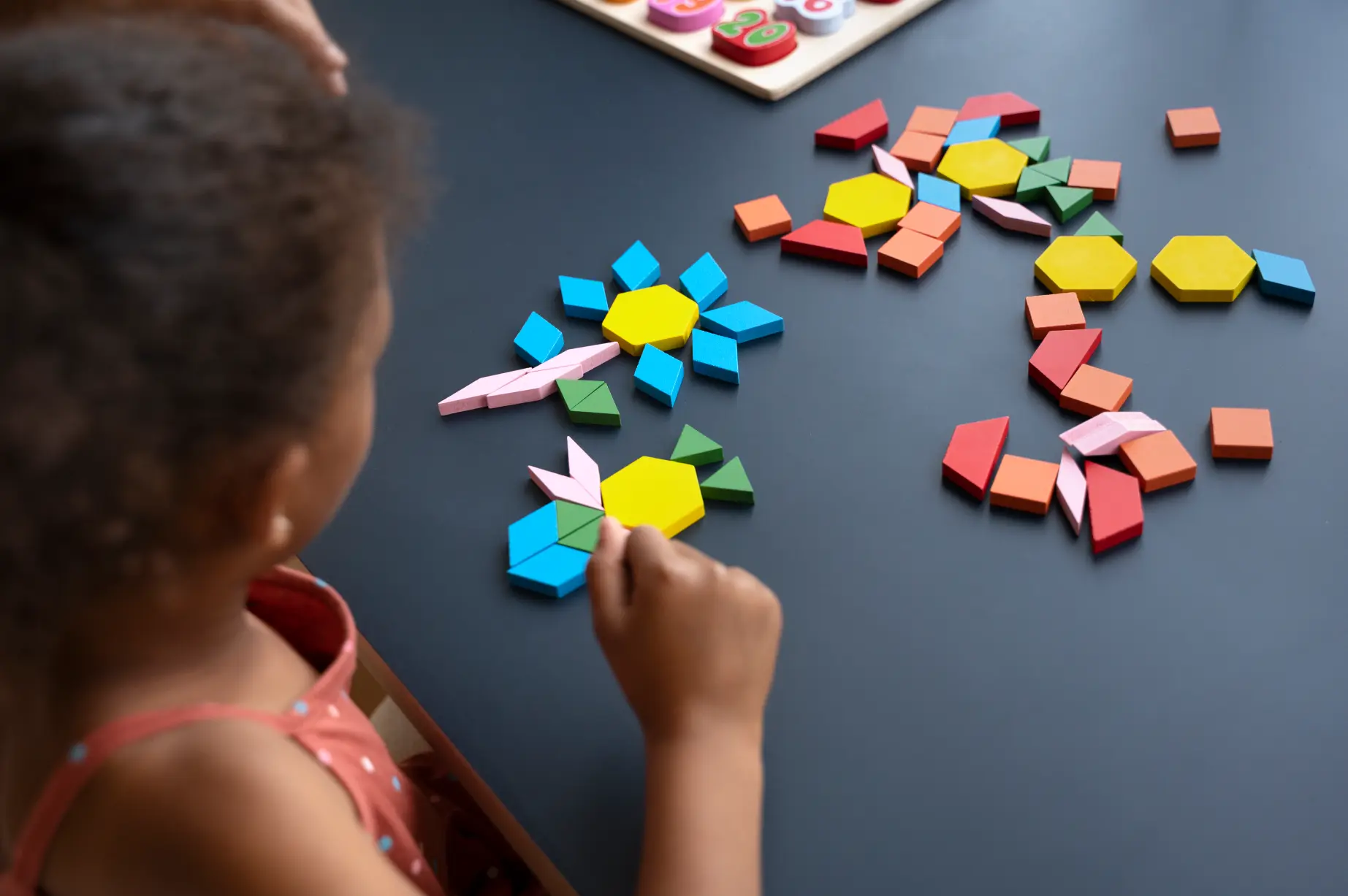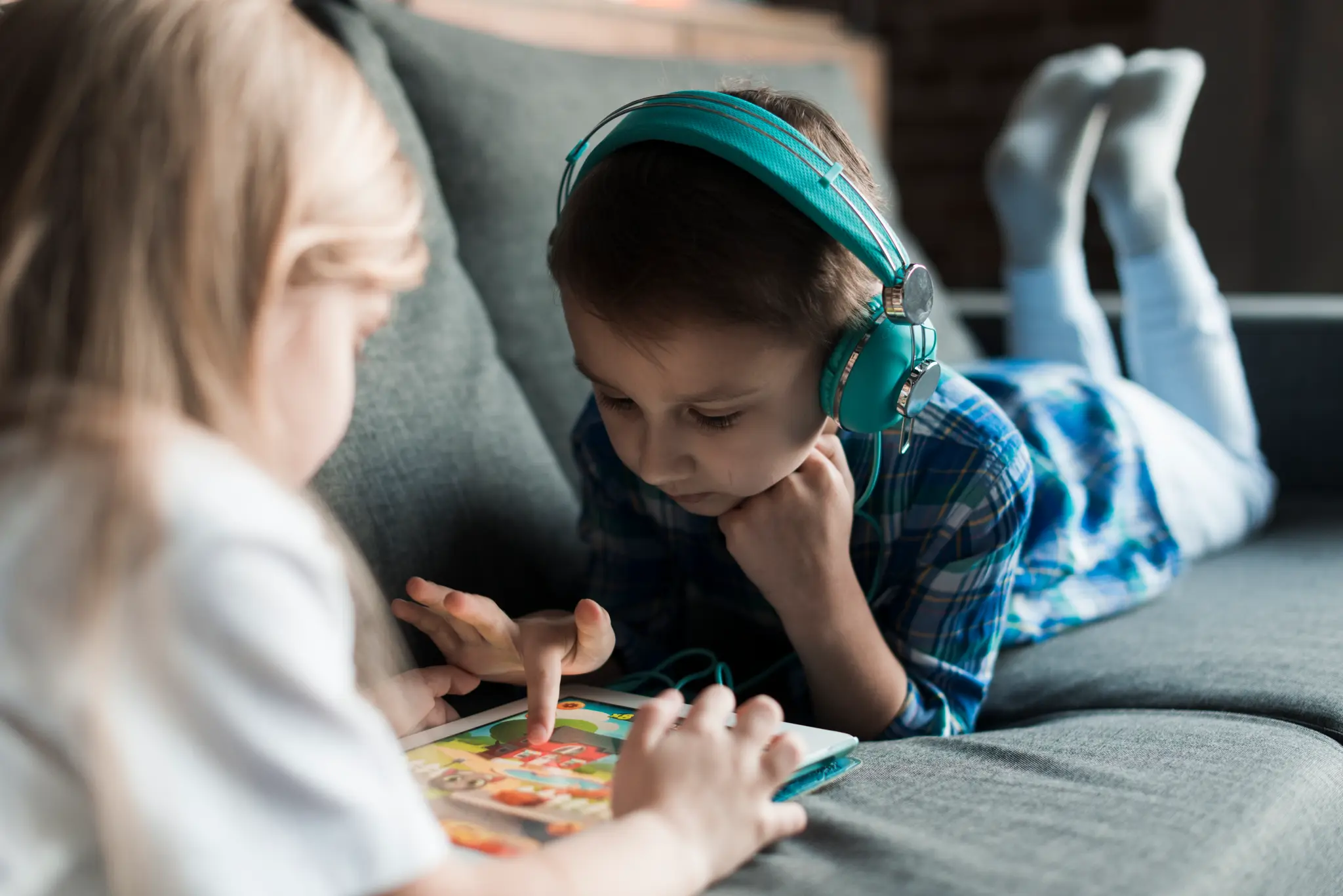Q&A with a Psychologist: Common Autism Questions Answered

At Action Behavior Centers, we know how important early intervention is. After a child is diagnosed with autism, every moment counts. That’s why we help children get started with applied behavior analysis (ABA) therapy as soon as possible.
As a parent, you probably have questions. What does an autism diagnosis really mean? What does ABA therapy look like? And where should you start?
We sat down with some of our licensed psychologists to answer common questions families have about autism, the diagnostic process, and how we help children on the spectrum learn and grow at ABC.
What is autism spectrum disorder?
Autism spectrum disorder (ASD) is a neurodevelopmental disorder. Neurodevelopmental disorders are conditions that impact a child's brain development and can influence abilities related to learning, social functioning, and language. For a child to be diagnosed with autism, several criteria must be met. First, there must be ongoing challenges with social communication and back-and-forth social interaction. There must also be a consistent presence of restricted and repetitive behaviors, interests, or activities. These symptoms need to have been noticeable during the early stages of your child’s development. In addition, the symptoms must cause significant challenges in important areas of daily life, like forming social relationships or succeeding in school. Finally, the symptoms can’t be better explained by another diagnosis, such as an intellectual disability or a global developmental delay.
It’s also important to remember that autism is called a "spectrum" for a reason. Every child with autism is different, showing a wide variety of symptoms and unique combinations of strengths and challenges. If you’re looking for more detailed examples of what social communication differences or repetitive behaviors can look like, the fifth edition of the Diagnostic and Statistical Manual of Mental Disorders (DSM-5) is the tool professionals use to help guide an autism diagnosis. It’s considered the gold standard for understanding autism and how it can show up differently in each child.
What are the main symptoms of autism?
According to the DSM-5, autism spectrum disorder is defined by two main categories of symptoms:
- Persistent deficits in social communication and interaction
- Restricted, repetitive patterns of behavior, interests, or activities.
Children with autism may have difficulty starting social interactions, responding to others, or forming and maintaining friendships. They might also struggle with pretend play, have limited interest in peers, or find it challenging to engage in basic back-and-forth conversations. Many children on the spectrum also have trouble communicating their wants and needs, sharing emotions, or using nonverbal communication like eye contact, gestures, and facial expressions.
Repetitive behaviors are another common characteristic. These can include repetitive body movements, repeated use of objects, or repetitive speech—such as lining up toys, flipping objects, or echoing what others say. Children may also show a strong need for routine, becoming upset with even minor changes. Their interests might be unusually intense or focused on specific topics or objects.
In addition, many children with autism experience sensory differences. According to the DC:0–5™ Diagnostic Classification of Mental Health and Developmental Disorders of Infancy and Early Childhood—an essential guide for understanding mental health diagnoses in infants, young children, and their families—sensory issues occur when a child is unable to or has difficulty regulating sensory input from the environment.
Some may overreact or underreact to sensory input, such as not noticing pain or temperature changes, being sensitive to sounds or textures, engaging in behaviors like smelling objects or being visually fixated on certain things.
It’s important to remember that not every child with autism will show all of these signs. Autism is called a "spectrum" because symptoms can vary widely from person to person. Some individuals may need significant daily support, while others can live independently with minimal assistance.
What are some early signs of autism?
Autism spectrum disorder can show up in the first months of life, though signs may be subtle at first. Some of the earliest signs to watch for include:
- Limited eye contact: Most babies begin making eye contact by six to eight weeks old. If a baby avoids eye contact or doesn’t respond to faces, it may be a good idea to check in with your pediatrician.
- Less social smiling: Babies with autism may not smile in response to a caregiver’s smile or may not share enjoyment through smiling.
- Lack of gestures: Around 9 to 12 months, babies usually start pointing, waving, or reaching to be picked up. A delay or lack of these gestures can be an early sign of autism.
- Not responding to their name: By around 6 to 9 months, many babies begin to turn toward voices, especially when their name is called.
- Limited interest in others: Babies often “check in” with their caregivers, like looking back to see how a parent reacts to something. A lack of this kind of social referencing may also be a sign of ASD.
- Delayed babbling or speech: Most babies start babbling by six months. Delays in these early sounds may be a reason to talk with your pediatrician.
Every child develops at their own pace, but noticing these signs early can help families get the support they need.
What are the levels of autism?
The DSM-5 defines three levels of autism spectrum disorder based on the amount of support an individual needs. These levels help describe the severity of symptoms in two key areas: social affect and restricted, repetitive behaviors.
An individual may have the same level of support needs across both domains, but it’s also possible to have different levels. For example, someone might be classified as level one in social affect and level two in restricted and repetitive behaviors.
Level one autism is described as “requiring support.” It indicates that mild support is necessary to address symptoms of autism. Children at this level may have some social challenges, such as difficulty initiating social interactions. They might struggle with transitions or have trouble coping with changes in routine. However, children with level one autism can often manage well with some help.
Children with level two autism are described as “requiring substantial support.” These children may struggle more with both verbal and nonverbal communication and have more obvious social difficulties. They may show limited attempts to initiate social interactions or respond in unexpected ways to others. Children at this level often have a harder time coping with change and display more repetitive and restrictive behaviors, which are noticeable to the casual observer and can interfere with daily functioning across different settings. Even with support, their challenges are more pronounced.
The DSM-5 describes level three autism as “requiring very substantial support.” At this level, children may have very limited verbal and nonverbal communication skills and intense behaviors that significantly impact daily life. They often have minimal social interactions and show severe difficulty coping with changes in their environment. Restricted and repetitive behaviors are highly noticeable and interfere with functioning in all areas. Children at level three require frequent and ongoing support.
How does a child get diagnosed with autism?
A thorough autism diagnostic evaluation includes several steps. First, a trained professional, such as a licensed psychologist or developmental pediatrician, meets with the child’s caregivers and observes the child. They can use a combination of parent-report screeners and standardized assessment tools like the ADOS-2 autism spectrum test. All of this data is reviewed to determine whether the child meets the criteria for autism spectrum disorder.
Want to learn more?
Let’s take the first step together. Contact Action Behavior Centers today to get started.
At Action Behavior Centers (ABC), we help children diagnosed with autism spectrum disorder (ASD) reach milestone moments. Compassionate care is at the heart of everything we do, and our highly trained clinicians deliver evidence-based applied behavior analysis (ABA) therapy tailored to each child’s unique needs.
Our autism services include diagnostic support, 1:1 individualized care, parent training, school readiness programs, and Early Intensive Behavioral Intervention (EIBI) across hundreds of centers in Arizona, Colorado, Illinois, Minnesota, North Carolina, and Texas. Because no family should have to wait for help, ABC offers immediate access to care. Contact us today to get started.


Join our newsletter
Stay in the loop with tips, events, and resources for families and clinicians. We’ll email you about once a quarter, and you can unsubscribe anytime.
More posts on:

What Is Regression in Autism Spectrum Disorder (ASD)?
Autism spectrum disorder (ASD) is a neurodevelopmental condition that affects communication, social interaction, and behavior. Today, about 1 in 31 children is diagnosed with autism.1 While many children make steady progress with early intervention, some may go through a period called regression. Understanding autism regression helps parents, caregivers, and educators know how to support children when this happens.
Your child is accepted here
At Action Behavior Centers, we provide applied behavior analysis (ABA) therapy, a gold standard approach for helping children with autism. Our evidence-based therapies are carefully crafted to meet your child’s needs and unlock their strengths and abilities.




